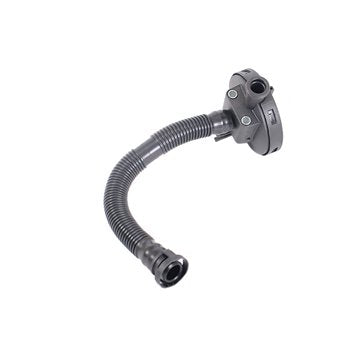Maintain long-term reliability with the right clp engine.
Maintain long-term reliability with the right clp engine.
Blog Article
Exactly How a Clp Engine Can Improve Efficiency in Different Industries
The advent of CLP engines marks a considerable shift in functional effectiveness throughout various markets, driven by their capability to optimize fuel intake and decrease downtime. Industries such as manufacturing and logistics stand to obtain substantially from their robust style and regular power outcome, which guarantee to enhance procedures and improve performance. As companies increasingly focus on sustainability along with efficiency, the function of CLP engines becomes much more crucial. What continues to be to be seen is exactly how these advancements will form the future landscape of commercial operations and their impact on broader financial fads (clp engine).
Introduction of CLP Engines
CLP engines, or Continuous Fluid Propellant engines, stand for a significant improvement in propulsion innovation, specifically for space applications. These engines make use of a continuous feed system that enables the continual expulsion of propellant, leading to enhanced efficiency and performance compared to conventional strong or hybrid propulsion systems. By keeping a continuous circulation of liquid propellant, CLP engines can achieve a lot more specific drive control, which is critical for steering spacecraft in various objective situations.
The layout of CLP engines integrates innovative materials and cutting-edge gas monitoring systems. clp engine. This results in reduced weight and increased integrity, necessary variables for long-duration room missions. The continuous operation lessens the risk of burning instability, an usual obstacle in conventional rocket engines.

Benefits in Manufacturing
The production of Continual Liquid Propellant (CLP) engines offers a number of notable advantages that improve both effectiveness and cost-effectiveness. One of the key advantages is the streamlined production procedure, which reduces the complexity associated with standard propulsion systems. By making use of liquid propellant, manufacturers can accomplish higher precision in engine efficiency, leading to maximized power outcome and minimized waste.
Furthermore, CLP engines help with a greater level of modularity, permitting easier integration into various production lines. This versatility can substantially reduce lead times and enhance total functional versatility. The use of CLP technology likewise often tends to lessen the demand for comprehensive upkeep as a result of fewer moving components, which equates into decreased downtime and operational expenses.

Applications in Logistics
Leveraging Continuous Liquid Propellant (CLP) engines in logistics offers considerable benefits in functional effectiveness and reliability. These engines give a robust solution for different transportation requirements, making it possible for the seamless movement of products throughout huge ranges. The integral style of CLP engines enables consistent power result, which converts visit this web-site into smoother and a lot more predictable transportation routines.
Among the essential applications of CLP engines in logistics is in heavy-duty freight transportation, where they can drive both ground and airborne lorries. Their capability to keep high efficiency under varying load conditions makes certain that distribution timelines are fulfilled, thereby boosting client complete satisfaction. In addition, CLP engines can be integrated into automated logistics systems, assisting in real-time monitoring and optimizing course preparation.
Moreover, the durability of CLP engines reduces maintenance downtime, enabling logistics companies to optimize their operational capabilities. This is especially advantageous in warehousing operations, where effectiveness in dealing with and transporting goods is important. As logistics continues to advance, the combination of CLP engines represents a forward-thinking method that not only enhances efficiency but likewise sustains the sector's expanding demands for reliability and speed.
Effect On Power Efficiency
Just How do Constant Fluid Propellant (CLP) engines enhance energy efficiency in transportation? CLP engines utilize a consistent flow of fluid fuel, optimizing combustion processes and maintaining a secure drive output. This design decreases energy losses related to conventional combustion engines, where gas delivery can vary and cause inadequacies.
The continuous procedure of CLP engines enables for a more efficient thermal cycle, resulting in higher particular impulse contrasted to standard engines. clp engine. This equates to lowered fuel intake for the same quantity of work done, dramatically lowering operational costs throughout various transportation sectors, including aviation and maritime industries
In addition, the ability of CLP engines to maintain ideal performance under varying load problems minimizes the need for regular velocity and deceleration, additionally boosting fuel efficiency. Improved power efficiency not only adds to set you back savings yet additionally leads to lower greenhouse gas exhausts, straightening with worldwide sustainability goals.
Future Trends and Innovations
Emerging advancements in Continuous Fluid Propellant (CLP) engine technology guarantee to revolutionize the landscape of transportation efficiency and sustainability. As markets pivot towards greener options, CLP engines stand at the center, integrating innovative materials read the article and layout techniques that boost performance while decreasing ecological influence.
Among the most promising trends is the adoption of hybrid systems that incorporate CLP engines with renewable resource resources. This synergy can maximize fuel consumption and decrease emissions, aligning with international sustainability objectives. Developments in computational liquid characteristics (CFD) are assisting in the style of even more aerodynamically efficient engines, leading to reduced drag and improved gas effectiveness.
Additionally, the advancement of wise monitoring systems is set to enhance functional performances. These systems leverage information analytics and IoT technology to optimize engine efficiency in real-time, ensuring that the engines operate within their most efficient parameters.
As research remains to explore different propellant formulations-- such as biofuels and synthetic gas-- the future of CLP engines looks encouraging. By harnessing these advancements, sectors can not just boost their performance however also contribute dramatically to a cleaner, extra sustainable future in transportation.
Final Thought
Finally, CLP engines stand for a substantial advancement useful reference in efficiency across numerous sectors. Their capacity to optimize gas intake and minimize operational costs, combined with a continuous feed system, boosts power result and operational integrity. The combination of sophisticated products and less relocating parts decreases upkeep demands, while positioning with sustainability goals settings CLP engines as a crucial innovation for the future. Proceeded innovation in this field promises further renovations in efficiency and ecological efficiency.
Report this page